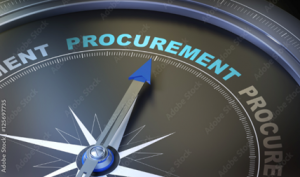A spotlight has been shone on all aspects of our supply chains lately, mainly due to recent disruptions due to world events. Cascading uncertainty can be disastrous for our supply chains, and procurement is not an exception. Accelerated by ongoing pressures, all aspects of the procurement function are evolving at breakneck speed, moving from yesterday’s reactive, transactional and cost-based focus to a proactive, analysis-based total-cost-of-ownership focus. Given where procurement is headed in the near term, the obvious question becomes, are you ready?
Where are we now?
eProcurement tools and software with user-friendly interfaces and Cloud-based access are beginning to reduce costs and increase efficiency. Rapid advancements in digital technologies are redefining business supply chains and transforming procurement. Digital procurement is starting to deliver disruptive technologies enabling predictive strategic sourcing, more automated procurement, and proactive supplier relationship management that’s highly effective. These digital solutions provide access to previously unavailable data, for example, enabling more complex analysis and improving strategies.

Procurement professionals are using procurement dashboards that identify and monitor trends and problems rapidly. Vendor performance, outstanding transactions, and total spend are now easily tracked. Supply-chain management software is accelerating and simplifying the entire procurement process while reducing its price tag. Many of these emerging technologies are easily integrated, involve minimal investment, and have a rapid payback.
But we’re still at the beginning of revamping procurement. There’s still a lot of work to do. For example, while there are terabytes of data collected and available daily, therein also lies the challenge. Accenture reports that “procurement organizations that truly benefit from analytics are the exception, not the rule. Most still struggle to deploy more mature analytics capabilities to drive business impact.”
Where are we going tomorrow?
AI’s machine learning is making its way into data analysis, demand forecasting, and procurement management. Machine learning and pattern recognition are starting to add insight to unstructured spend, contract, cost, and supplier data and monitor various risks and customer demand in real-time. AI-based automation is offloading routine procurement tasks so that procurement teams can focus on strategy.
AI will eventually manage a large volume of orders and update systems automatically. Smart contracts and blockchain will increasingly validate transactions and automate payments. Procurement professionals will be freer to collaborate and support developments and supplier relationships as technology continues to advance. Technology will also provide greater transparency and information sharing across the supply chain.
All of this won’t happen in a vacuum. Procurement professionals need to stay on top of tech and add strategic, collaborative, commercial, and global expertise to their skillset. It’s no longer sufficient to push transactions and react to events. Procurement professionals must deliver value-added business performance.
Even outside of today’s workforce shortage, procurement faces workforce challenges, especially how to bring a workforce along quickly enough to meet rapid changes. There’s a wealth of “institutional knowledge” from those that have spent considerable time within the industry. How will a millennial workforce tap into (or replace) that knowledge while bringing about digital transformation? Some of the current challenges are analytic modeling, cross-functional expertise where needed, and the ability to be sufficiently agile.
Here’s where you come in
Fortunately, companies are more willing to outsource non-strategic tasks and traditional work so that their procurement professionals can dedicate themselves to high-value, strategic decisions. Accenture reports that by simply getting rid of jobs like invoicing, catalogue management, and task and spend analytics, they gain up to 40% capacity for their procurement team, resulting in efficiencies and growth.
Andrew Bortolini, in an excellent recent CPO Rising series, ‘Skills for the Modern Procurement Pro,’ defines 14 core procurement skills. According to Bortolini, “For procurement professionals, the ability to analyze spend and other procurement data…to connect the dots – is critical for organizational success and ultimately career advancement.” He also indicates that CPOS today find their staffs average concerning this data analysis. Financial analysis, strategic sourcing capabilities, expertise in specific supply markets, and category, contract, and cash management skills are at the top of the list of skills CPOs want. Also critical are operational procurement, supply risk, supplier performance management, the ability to leverage technology to drive value, and general skills such as business consulting, presentation, and project management. In other words, there’s a wealth of opportunity and very diverse paths available to achieve it.
In addition to the rapid evolution of procurement and potential professional growth, workforce demographics are also changing. According to Entrepreneur, by 2025, 75% of the workforce will be digital natives. Advanced technology adoption will be critical for process automation as well as recruiting and retention.
If you’re willing to dive in headfirst, tackle the opportunities, and run with them, it can be the best of times.

